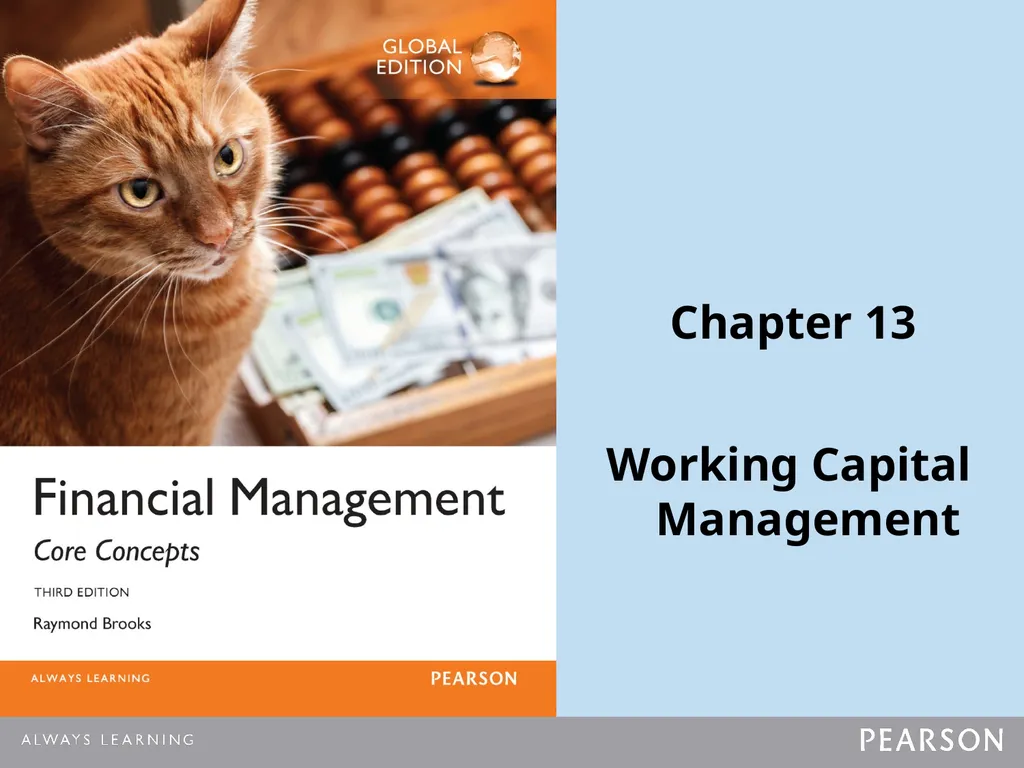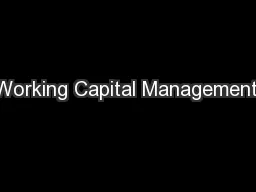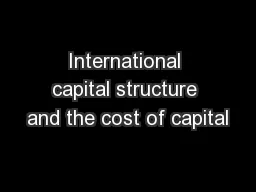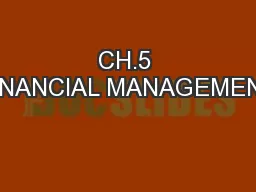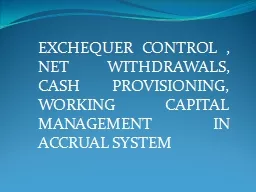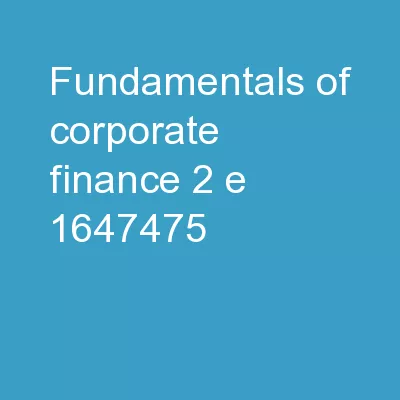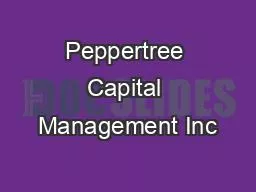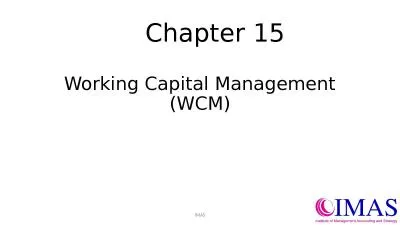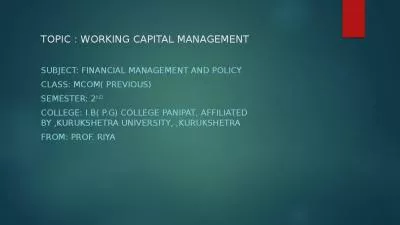Chapter 13 Working Capital Management Learning
Author : calandra-battersby | Published Date : 2025-06-27
Description: Chapter 13 Working Capital Management Learning Objectives 1 Model the cash conversion cycle and explain its components 2 Understand why the timing of accounts receivable is important and explain the components of credit policy 3
Presentation Embed Code
Download Presentation
Download
Presentation The PPT/PDF document
"Chapter 13 Working Capital Management Learning" is the property of its rightful owner.
Permission is granted to download and print the materials on this website for personal, non-commercial use only,
and to display it on your personal computer provided you do not modify the materials and that you retain all
copyright notices contained in the materials. By downloading content from our website, you accept the terms of
this agreement.
Transcript:Chapter 13 Working Capital Management Learning:
Chapter 13 Working Capital Management Learning Objectives 1. Model the cash conversion cycle and explain its components. 2. Understand why the timing of accounts receivable is important and explain the components of credit policy. 3. Understand the concept of float and its effect on cash flow and explain how to speed up receivables and slow down disbursements. 4. Explain inventory management techniques and calculate the economic order quantity (EOQ). 5. Account for working capital changes in capital budgeting decisions. 13.1 The Cash Conversion Cycle In order to manage working capital efficiently, a firm has to be aware of how long it takes them, on average, to convert their goods and services into cash. This length of time is formally known as the cash conversion cycle. The cash conversion cycle is made up of 3 separate cycles: The production cycle: i.e. the time it takes to build and sell the product The collection cycle: i.e. the time it takes to collect from customers (i.e. collecting accounts receivable) and The payment cycle: i.e. the time it takes to pay for supplies and labor, i.e. paying accounts payable). 13.1 The Cash Conversion Cycle (continued) The production cycle and the collection cycle together make up the operating cycle, so the cash conversion cycle can also be calculated as follows: Cash conversion cycle = Operating cycle – Payment cycle. Figure 13.1 The cash conversion cycle. 13.1 The Cash Conversion Cycle (continued) The production cycle begins when a customer places an order and ends when the product is shipped out. The collection cycle begins when the order is filled and ends when payment is received. The payment cycle begins when labor is hired or raw materials are received to start production and ends when the firm pays for purchases, raw materials and other production costs. Firms typically have to pay for production costs before they receive payment from their customers, a longer cash conversion cycle would tie up their finances and vice-versa. Must keep track of these various cycles and try to shorten the cash conversion cycle so as to free up much needed funds. 13.1 (A) Average production cycle Calculated in 3 steps. First calculate average inventory as shown in Equation 13.2 Next, calculate the inventory turnover rate as follows: Lastly, calculate the average production cycle as follows: 13.1 (B) Average collection cycle Makes up the other leg of the operations cycle. It measures the
